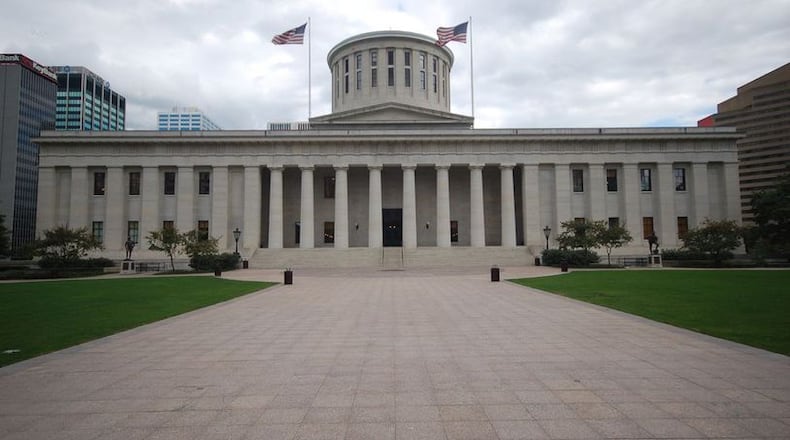The group met publicly Tuesday and Thursday, recessing Thursday evening after brief public appearances to discuss maps of the Columbus and Cincinnati areas. Commissioners said they would reconvene at 9:30 a.m. Friday, but instead sent word they would remain closeted.
As of Friday afternoon, no updates were offered by legislative leaders from either party. Commission member Gov. Mike DeWine spent the afternoon at the announcement of two new computer chip factories just east of Columbus.
On Thursday commissioners suggested a greater chance of bipartisan cooperation existed now then during the map-drawing process last year when the Republican-dominated commission approved maps in a party-line vote.
After the commission voted 5-2 for the previous maps, several progressive and voting-rights groups sued. The Ohio Supreme Court overturned those maps Jan. 12 and gave the commission 10 days to approve new ones.
Lead plaintiff in the case was the League of Women Voters of Ohio. Jen Miller, the league’s executive director, said Friday that commissioners should have made their map-drawing more public this time around.
“Certainly we’re disappointed that the process has not been transparent,” she said.
Miller would’ve liked to see hearings with plenty of advance notice, with at least a rough draft map available as a starting point for public discussion.
Still, she remains hopeful commissioners will work together and approve a map that satisfies the court’s instructions and the will of Ohio voters.
“It is very possible to create maps that meet constitutional muster,” Miller said.
The league has submitted its own map proposals through the redistricting commission’s website, www.redistricting.ohio.gov. The public can also submit maps and comments there.
Commissioners have been working under the explicit assumption that the court’s 10-day deadline expires midnight Saturday, Jan. 22. But on Thursday afternoon Ohio Auditor Keith Faber floated the idea that the commission might actually have until midnight Monday, Jan. 24. Other commission members disagreed for the moment, sticking with Saturday.
According to the Ohio Supreme Court Rules of Practice on computation of time in judicial rulings, if a deadline would fall on “Saturday, Sunday or a legal holiday,” it’s automatically extended to the end of the next regular workday.
Once the commission approves new maps, three days are allotted to file any new objections. The Supreme Court retains jurisdiction over the new maps. If any more objections are made, only a week would remain to resolve them before the Feb. 2 filing deadline for state legislative seats.
Central to the court’s ruling was the need for proportionality: for the likely partisan makeup of the map to resemble the 54% Republican-46% Democratic way Ohioans have voted in recent statewide elections. The Ohio Supreme Court ruled 4-3 that the original maps were gerrymandered to increase the supermajority Republicans already hold in both houses of the legislature.
If the commission, which consists of five Republicans and two Democrats, again approves maps without minority-party support as it did in September, the process must be redone in four years, even if there are no further court challenges. Maps accepted by both parties will last until the next decennial census.
About the Author

